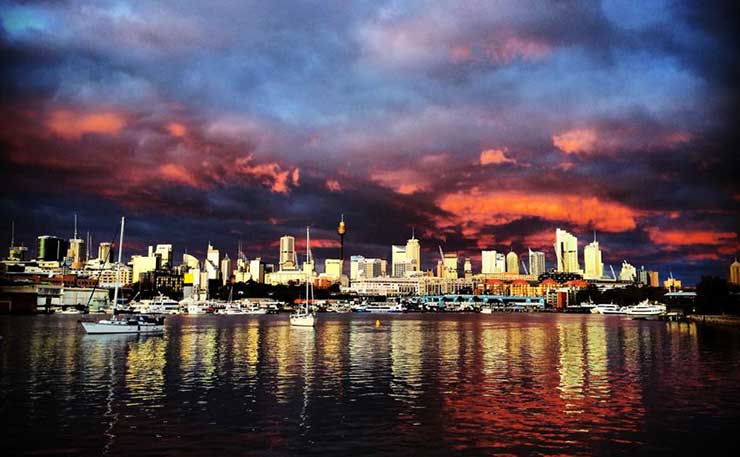The history of development – and transfer of public land to private interests – under successive NSW Governments is a scandal, writes Jamie Parker. But the city has finally awoken from its slumber.
Sydney is not only Australia’s most beautiful city, it is also the only one to have the chance to roll the dice twice when it comes to redrawing its harbour foreshore.
The first roll produced Barangaroo – an outstanding example of using the political process to transfer public lands to private ownership, shift the risk from the private sector to the taxpayer, and produce one of the world’s most overwrought developments – big and planning to get bigger.
The second roll is for the Bay Precinct.
For those not lucky enough to live in Sydney, the Bay Precinct is the biggest proposed urban development in the world today. It is located two kilometres from Sydney’s central business district and includes Blackwattle Bay, Sydney Fish Markets, and Rozelle Bay, Rozelle rail yards, Glebe Island, White Bay, White Bay Power Station and surrounds.
It has a 5.5 kilometre length of waterfront and includes 95 hectares of land that is owned by us – the public of NSW – and 94 hectares of Sydney Harbour.
The precinct site is incredible and much of it beautiful. And unlike Barangaroo, its fate has yet to be determined.
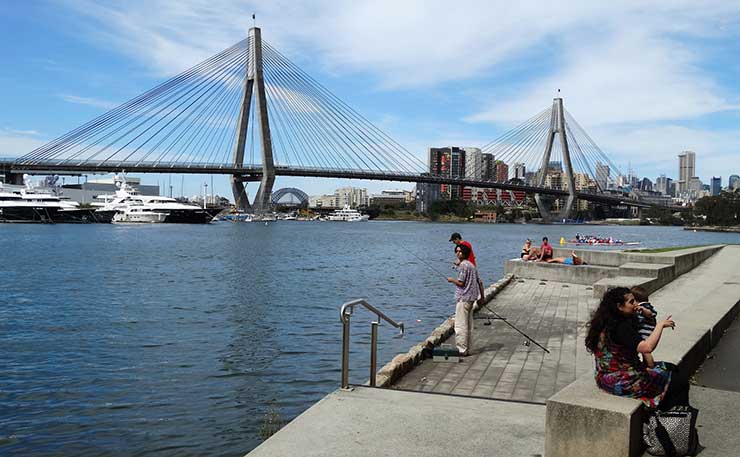
A look at what went wrong with Barangaroo will illuminate how we avoid a similar outcome for the Bays Precinct.
Barangaroo began life in 2003 when the NSW Labor government decided to shut down the working harbor and move shipping and stevedoring facilities from the the city to Botany Bay. This decision created a space of about 22 hectares that could be redeveloped for housing and commercial use.
For any State government, this was an extraordinary opportunity to determine significant changes to the city’s cultural and economic profile. Would they use this to create more green space, greater connectivity, a more resilient and diverse economy or “a blather of mindless housing… with keycard access”?
Thirteen years later the answer is emerging out of the sandstone. It is not so much “a blather of mindless housing…” as a testament to the power of James Packer and Lend Lease, and the spinelessness of successive Labor and Coalition governments. Sydney-siders have missed out on open space, affordable housing and a truly cultural centre, and gained instead an enclosed and darkened cityscape and the real possibility of picking up the tab for these over-developments for the next decade.
So how did we go from NSW Premier Bob Carr spruiking this as the opportunity of a lifetime for Sydney-siders and local communities, to the reality of today – a series of gin palaces and the alienation of public land for private profit?
As with so much about this site we have to begin with the question of size.
From the outset the tender for the project included the entire 22 hectares and a requirement for 50 per cent public land. There are not a lot of companies that can manage a project of that size. The Carr-Labor government put the design out to an international design competition to give the city the best chance of the world-class outcome.
The design brief looked promising with demands for a minimum of 50 per cent new foreshore parkland for the people of Sydney, as well as enhancing the growth and positioning of Sydney as the premier business, cultural and living centre of the Asia-Pacific region.
It was to provide a combination of working and recreational uses, and incorporate a 14-kilometre walkway from Woolloomooloo to Anzac Bridge.
The winning concept plan from Hills Thalis Architects had a prominent harbour-side park running the length of the waterfront, public streets that were designed to prevent one company taking over the entire development and nearly 400,000 square metres of floor space – 233,170 sqm for commercial space and 34,560 for a hotel.
The tallest building in the plan was 92 metres. Perhaps most ambitiously Philip Thalis described his team’s winning design “Sydney proof”, because he had divided the blocks of land by creating public streets, laying down a grid to ensure one company didn’t get the whole site.
Being Sydney, it was probably too much to hope for that the design would be realised. But even I was shocked when the winning plan was simply dropped without a word of explanation from anyone. Even so, I thought at least we have the City of Sydney Council to ensure the development would still comply with stringent restrictions on height, access, affordable housing and open space.
This is where the lack of transparency that has been characteristic of this site becomes obvious to even the most disinterested observer. It turns out that Barangaroo had been made a “state significant site”. That meant Frank Sartor, then Labor Planning Minister, took total control of the development, and the City of Sydney would have no further input or say.
By December 2008 the Sydney Harbour Foreshore Authority had handed over control of the site to the newly created Barangaroo Delivery Authority and within months the site was out to tender. By the end of 2009 – in fact four days before Christmas – it was announced that Lend Lease had won the tender for stage one – an historic announcement given it was the first time a single developer had been granted seven hectares of city land.
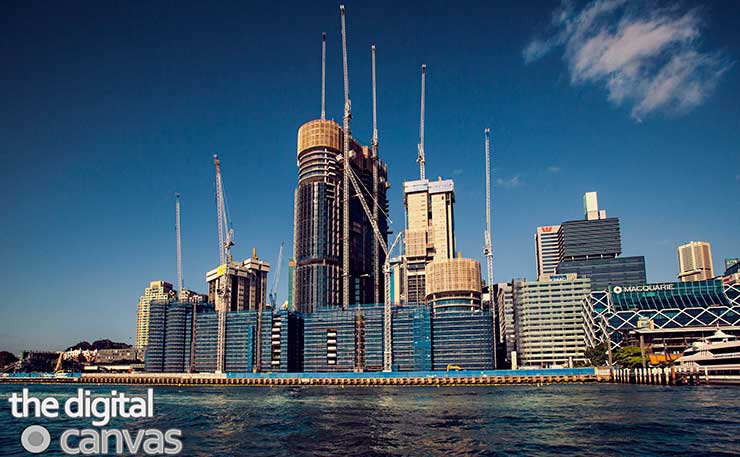
By this stage, the government was already going weak at the knees and announced the amount of commercial office space would increase by one third, allowing an additional 120,000 square meters from the initial concept plan.
There are numerous reports globally that outline the basic requirements to develop projects of this size in a way that achieves public support and commercial viability. A report by SGS Economics & Planning titled Best Practice Urban Renewal, outlines the basic problem with Barangaroo:
The project has been criticised for a lack of transparency in the planning process and delivery outcomes, and in particular for the way the plan provides for ever-increasing yields to generate revenues to match major site infrastructure and costs such as the construction of a headland park.
Put simply, if this project had been broken up into much smaller parcels of land, many more companies would have been able to tender, bringing to the site diversity of design and a lower risk profile. That would have generated more jobs and made it much more difficult for both the Labor and Coalition governments to keep the community removed from the process.
Then there’s the question of value for money… because after all, this is 22 hectares of public land on the fringe of the CBD – literally worth billions of dollars.
That’s why I said in the NSW Parliament:
I believe that the people of New South Wales have been short-changed by the Barangaroo development in general. The Barangaroo development is not delivering money for the people of New South Wales; it is costing the taxpayers hundreds of millions of dollars—and that is before we even look at the real cost that Lend Lease has paid for the site. Sites in the surrounding area cost in excess of $3,000 per square metre. The amount that Lend Lease will pay for this site is significantly less. In fact, when compared to the cost of sites in surrounding areas, it will pay close to $750 million to $1 billion less than the market price.
NSW could do a lot with that billion dollars. We could invest in hospitals, schools, parks, and roads. This lack of transparency around the deal has real consequences for the community. Not just alienated public land, ugly overdevelopment and literally darkening the city itself, but loss of community resources.
However even the NSW ALP knew they had to at least have a semblance of community consultation – though this looked more like an exercise in managing dissent.
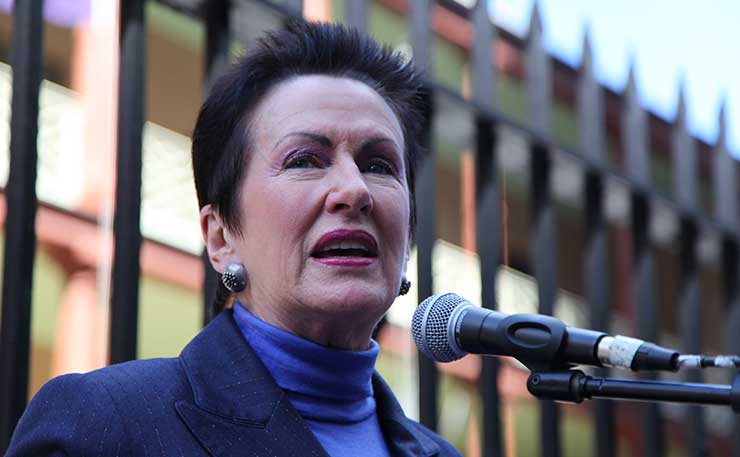
When the Mayor of Sydney, Clover Moore, resigned from the Board of the Barangaroo Delivery Authority in September 2010 citing, “inadequate and ineffective community consultation” and the “external control” that was forcing the project to proceed before it was considered properly, the Labor government silenced a staunch and well-resourced critic of the process, if not the project.
Allowing for community consultation on a stage-by-stage basis meant that at no time was it possible for the community to comment on the overall project. And on a project this size being built over a decade, perspective is everything and necessary.
As this comment piece by journalist Michael Pascoe notes:
“Hats off to the spinners, who somehow seem to avoid any images that may indicate just how dominant the casino will be on the Sydney skyline. Marvellous what you can do with a few tricks of perspective and angles. The corporate video and artist’s impressions are wonderful exercises in viewing the whole building only from the air. Most people will end up seeing it from ground level, where it will tower, so to speak, over the city from the northern and western sides while being pretty hard to miss from the east and south as well.”
There was no meaningful community consultation with Barangaroo. Even when it was finally revealed that the Lend Lease plan known as Modification 8 would see residential development increased by 54 per cent, hospitality floor space by 79 per cent and retail by 18 per cent with no public benefit, there would be no way to stop it.
This public powerlessness was felt most acutely when it was revealed that in the dying days of the Keneally Labor government, then Planning Minister, Tony Kelly, excised the Barangaroo site from NSW planning laws for managing contamination. The order exempted the Barangaroo development from the state planning policy on remediation, making it the only polluted development site in NSW where a remediation plan is not required for planning approval.
By the time James Packer had revealed his long list of “must haves” for his Crown Casino, the whole idea of community consultation had collapsed.
As this comment piece by Fairfax Media makes clear in the opening lines, no-one seriously thinks anything can stop the House:
“Congratulations to Lend Lease and Crown for getting pretty much everything they want (again) from the state government for James Packer’s Barangaroo casino.”
Finally, it’s worth remembering that when Bob Carr launched this project back in 2003 by declaring at the Sydney Town Hall an end to Sydney Harbour’s long history as a working port, in order to make way for a combination of housing, public space and “iconic” development, the focus was on the public benefit. It was all about the 50 per cent of open space, the housing, and the public good.
In 2016, it is clear there will only be 2.5 per cent affordable housing, and that public land has been reduced to the 6 hectare park on the northern strip, and a patch together of service roads and pathways. That’s it.
Though to be honest it may not even amount to that in the end because the one consistent thing in this entire exercise has been how the public benefit slips to make room for more private profit.
And now the same government is asking the community to go through a similar process with the Bay Precinct, although this time it is even bigger.
The Bay Precinct is 95 hectares of public land with the potential to create over 16,000 homes. This number alone swamps the surrounding suburbs – it is potentially a suburb within a suburb.
So far it looks like the Glebe/White Bay area will become home to a massive traffic interchange, instead of sports parks for kids to play on. The White Bay Power Station is likely to become home to yet another transnational company, while the shoreline fills with pillars of housing – creating a cliff from the water and severing Balmain’s relationship with the harbour forever.
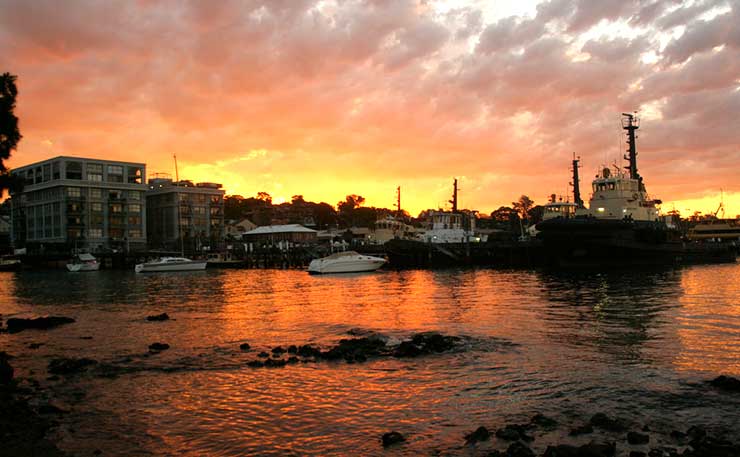
The community is weary from talk of massive developments but I have yet to hear the Coalition talk about plans for new hospitals, schools, childcare centres, parks, cycleways, sporting facilities or public transport infrastructure to service the new residents.
Many in our community are bracing for a Barangaroo-on-steroids approach to this development. Without a transparent, strategic and evidence-based approach, the Bays Precinct will fail to deliver world-class urban renewal for Sydney. Instead, it will deliver a huge, private windfall at the expense of the long-term public interest.
Sydney could be leading the way with sustainable, integrated, democratic, vibrant infill development that provides continuous public access to the harbour front, includes social and — importantly— affordable housing, recreation and community facilities.
This time the community is wary and watching.
At the end of 2015, more than 1,000 people attended public meetings to call for an open, democratic and transparent process. We are determined not to have our voices drowned out by UrbanGrowth NSW, financiers, developers or the State Government. The community has developed its own Bays Precinct Urban Renewal Project core public interest principles. Resolution 1 states:
To call on the Government to ensure that the Bays Precinct Urban Renewal Project follows a democratic and open process which enables public and private interests to come together creatively and imaginatively to ensure that the outcome will be worthy of the site and of Sydney’s status as a global city and properly protective of the public interest.
The community of Sydney is in no mood to fall victim to more political fixes for “mates”, and corrupt, non-transparent deals. Nor are we willing to watch as 95 hectares of public land is transferred into private ownership.
Even if the government has not learnt from the Barangaroo experience we certainly have.
Donate To New Matilda
New Matilda is a small, independent media outlet. We survive through reader contributions, and never losing a lawsuit. If you got something from this article, giving something back helps us to continue speaking truth to power. Every little bit counts.

